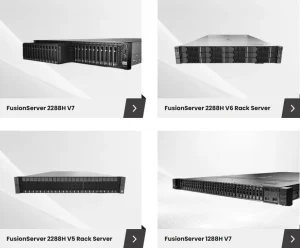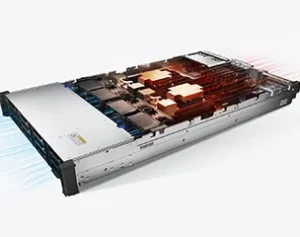What Makes Fusion Server Suitable for 5G Networks?
Key Features of Fusion Server for High-Speed Connectivity
 The Fusion Server is tailored to cater to the needs of high speed connectivity in 5G networks—a vital necessity these days! One impressive aspect is its capability to back-access edge computing (MEC). MEC moves strength nearer to the users end, which decreases delay and enhances user satisfaction. This feature complements the setup of 5th generation networks where data processing must happen at various nodes in the network.
The Fusion Server is tailored to cater to the needs of high speed connectivity in 5G networks—a vital necessity these days! One impressive aspect is its capability to back-access edge computing (MEC). MEC moves strength nearer to the users end, which decreases delay and enhances user satisfaction. This feature complements the setup of 5th generation networks where data processing must happen at various nodes in the network.
Fusion Server is also superb when it comes to scalability, something that 5g infrastructure requires since as the number of users making service requests grows and more devices are included in the network, it can scale its resources in real time without affecting performance. This kind of flexibility allows providers to respond swiftly to the circumstances present while ensuring high-quality service.
How Fusion Server Addresses the Challenges of 5G Infrastructure
It is not easy to build a 5th generation network, for example, controlling the consumption of energy and maintaining security while delivering consistent performance even during periods of peak usage. The Fusion Server tackles these hurdles with its energy design and integrated security measures.
It provides energy efficiency through optimized power management systems that reduce operational expenses while promoting sustainability. These systems are particularly important given 5G networks’ hefty energy demands.
Securing Fusion Server involves the use of high-level encryption techniques and real-time threat detection systems to safeguard data exchanged over 5th-generation networks.
The server is ahead of others in handling high density locations since it has a special blend of hardware and software integration competencies that allow it to handle numerous simultaneous connections without affecting the performance quality—a critical attribute to facilitate the operation of smart cities and IoT networks that heavily depend on 5th generation connectivity.
How Does Adaptive Scaling Enhance 5G Network Performance?
The Role of Adaptive Scaling in Managing Network Traffic
Adaptive scaling is a function that greatly boosts the effectiveness of 5th-generation networks by enabling the Fusion Server to adjust resources in response to current network needs on the fly. Specifically during periods of usage, the server can increase its computing capacity to manage higher levels of traffic efficiently.
This flexible allocation of resources reduces congestion and guarantees that every user enjoys a steady level of service quality consistently while also improving network efficiency by directing resources to areas where they are most required in the moment, which is essential for handling various applications, such as streaming videos and controlling industrial processes effectively.
Adaptable scaling is crucial for distributing workloads across various servers in a network to prevent any server from being overloaded and potentially causing network failures.
Benefits of Adaptive Scaling in Dynamic 5G Environments
Adaptive scaling offers more than streamlining resource usage. It brings cost savings and enhances user satisfaction as well by adjusting resources according to demand to help service providers cut costs without sacrificing service quality.
In changing settings like those seen at major public gatherings or times of crisis when user needs vary often—adaptive scaling guarantees continuous connectivity remains intact without interruptions in service provision. This feature is especially beneficial for software applications that depend on performance levels, such as emergency handling systems or financial transactions processing.
In addition to that adaptive scaling helps in the rollout of new services by making it easy to modify the current infrastructure promptly. This flexibility enables service providers to keep up with the competition in a changing market and meet customer demands for creative solutions.
Why Is Fusion Server a Reliable Choice for 5G Network Demands?
Fusion Server’s Capacity to Handle Large Data Volumes
The arrival of 5G technology has led to a surge in data requirements and the Fusion Server is specifically designed to thrive in this era of data demands. The server’s structure is optimized for handling amounts of data by utilizing high-speed memory and cutting-edge processors effectively. This feature is essential for activities, such as streaming videos seamlessly and supporting real-time data processing for applications like augmented reality and Internet of Things devices.
Ensuring Stability and Efficiency in 5G Deployments
In setting up 5th generation networks, reliability and effectiveness are key factors. And the Fusion Server excels in addressing these demands with its creative design and technology solutions. Its eco-friendly structure contributes significantly to cutting expenses while promoting environmentally friendly strategies. A crucial aspect to bear in mind due to the energy heavy nature of 5th gen infrastructure.
 The server incorporates power management solutions that reduce energy usage while also improving the overall reliability of the system. These solutions guarantee that during high workloads the server runs seamlessly without impacting performance or stability.
The server incorporates power management solutions that reduce energy usage while also improving the overall reliability of the system. These solutions guarantee that during high workloads the server runs seamlessly without impacting performance or stability.
Security is an aspect of the Fusion Servers architecture as it integrates cutting edge encryption methods and real time threat detection systems to protect confidential information sent via 5g networks effectively. From potential cyber threats, these functions play a role in safeguarding both users and service providers and ensuring a safe communication setting.
Who Is Huaying Hengtong and What Do They Offer?
An Introduction to Huaying Hengtong’s Services
At Huaying Hengtong, we focus on providing solutions customized to meet the changing needs of today’s telecommunications industry landscape. Our product range features state-of-the-art items like Fusion Servers, which are crafted to tackle the intricate issues brought about by advancements in technologies like 5th generation networks.
Our main goal is to offer effective solutions that empower our clients in creating strong networks that can handle cutting edge applications with ease and reliability.
We do not merely provide products. We work with the client at every stage of the project, from discussion to the implementation of the plan, to achieve a successful outcome. Let us help you improve your setup or build new systems from the ground up with our full support system that simplifies intricate procedures and helps you reach your objectives efficiently.
Frequently Asked Questions about Fusion Server and 5G Network
Q: What is a Fusion Server?
A: A Fusion Server is a high-performance computing platform optimized to handle demanding workloads. It integrates next-generation processors, memory, and storage platforms and provides scalability, reliability, and performance for applications such as cloud computing, artificial intelligence, and big data analytics.
Q: Who uses Fusion Servers?
A: Fusion Servers are utilized by enterprises, data centers, research institutions, and cloud providers. They are appropriate for companies requiring high compute intensity, such as AI modeling, data processing, and virtualization workloads.
Q: What is 5G network?
A: 5G is the fifth generation of mobile network technology, offering quicker data speeds, lower latency, and greater connectivity. It supports a wide range of applications, from improved mobile internet to enabling IoT devices, autonomous vehicles, and smart cities.
Q: How does 5G benefit businesses?
A: 5G enhances business processes through faster data transfer, low latency, and increased network dependability. This increases productivity, enables real-time analytics, and enables new technologies like IoT, automation, and enhanced customer experiences, which drive innovation and efficiency in industries.











